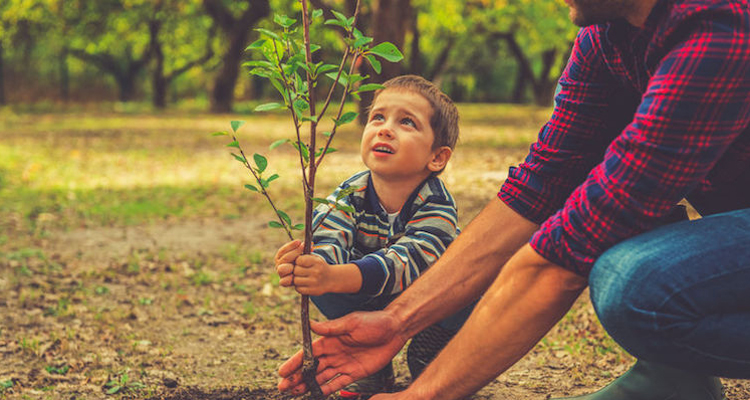Although the celebration of Earth Day (April 22) was started almost 50 years ago, its message is even more pertinent today, as our planet faces ecological issues like climate change, drought, and water scarcity. By teaching your children about Earth Day, you can instill in them a passion for making this planet a better, cleaner place. And you can start in your own backyard.
The first Earth Day was officially celebrated on April 22, 1970, and every year the movement grows bigger and is more widely celebrated. In 1990, Earth Day was celebrated with more than 140 countries participating. Today, more than 180 countries and a billion people observe the special day.
In celebration of Earth Day’s 50th anniversary in 2020, the Earth Day Network has a goal of planting 7.8 billion trees, which, they say, will mitigate climate change, reduce pollution, protect biodiversity, and support communities through food and energy production.
Our Responsibility to the Earth
Although Earth Day is celebrated just once a year, the spirit of the day can be carried throughout the year. The best way to show children how to care for the earth is to model earth-friendly behavior. Make changes in your own life that promote energy conservation, recycling, and giving back to the community, and show your children the importance of taking personal responsibility for our planet.
Here are some core concepts about our planet that you can teach your kids:
The Benefit of Trees in the World: The planet currently loses more than 15 billion trees each year, and 56 acres of forest are destroyed each minute. Trees use carbon dioxide in the air, and deforestation may lead to climate change, extinction of animals, food shortages, and an increase of toxins in the air. In honor of the day, teach your children about the importance of trees and their many benefits to this planet.
Easy Ways to Reduce Energy Use: Show your kids that caring for the earth is about more than just planting a tree. Teach your children simple things they can do to reduce energy use year-round, including—
- Turning off lights when they are not in the room
- Only washing dishes and clothes when there is a full load
- Switching to energy-efficient bulbs
- Walking or biking to close destinations
- Turning off electronic devices at night
- Using less light at night
- Opening windows and doors to let in fresh air instead of running the air conditioner
The Importance of Recycling: Children often don’t consider the long-term effects of their actions, such as what happens to trash once it reaches a landfill. Take a few minutes to discuss the importance of recycling with your children. Recycling is crucial for protecting our limited resources, preventing the accumulation of trash, and preventing ground pollution.
Water Conservation: Earth’s supply of water is limited, and access to potable water is rapidly diminishing in many parts of the world. Studies conducted by the University of Michigan estimate that by 2025, many countries around the world will have severe water problems. Only by taking steps now can we prevent a water crisis in our own country. Show children how to eliminate water waste with a few of these tips:
- Turn off faucets when not in use
- If you live in a dry climate, landscape with native plants that require little water
- Take short showers or baths with a minimum amount of water
- Only run the washer and dishwasher with full loads
Keeping the Spirit of Earth Day All Year Long
While there are many activities children can do on Earth Day to improve the world, the biggest benefit Earth Day can provide is education. If children implement what they learn on Earth Day year-round, they can help the planet become a cleaner place for generations to come.





































